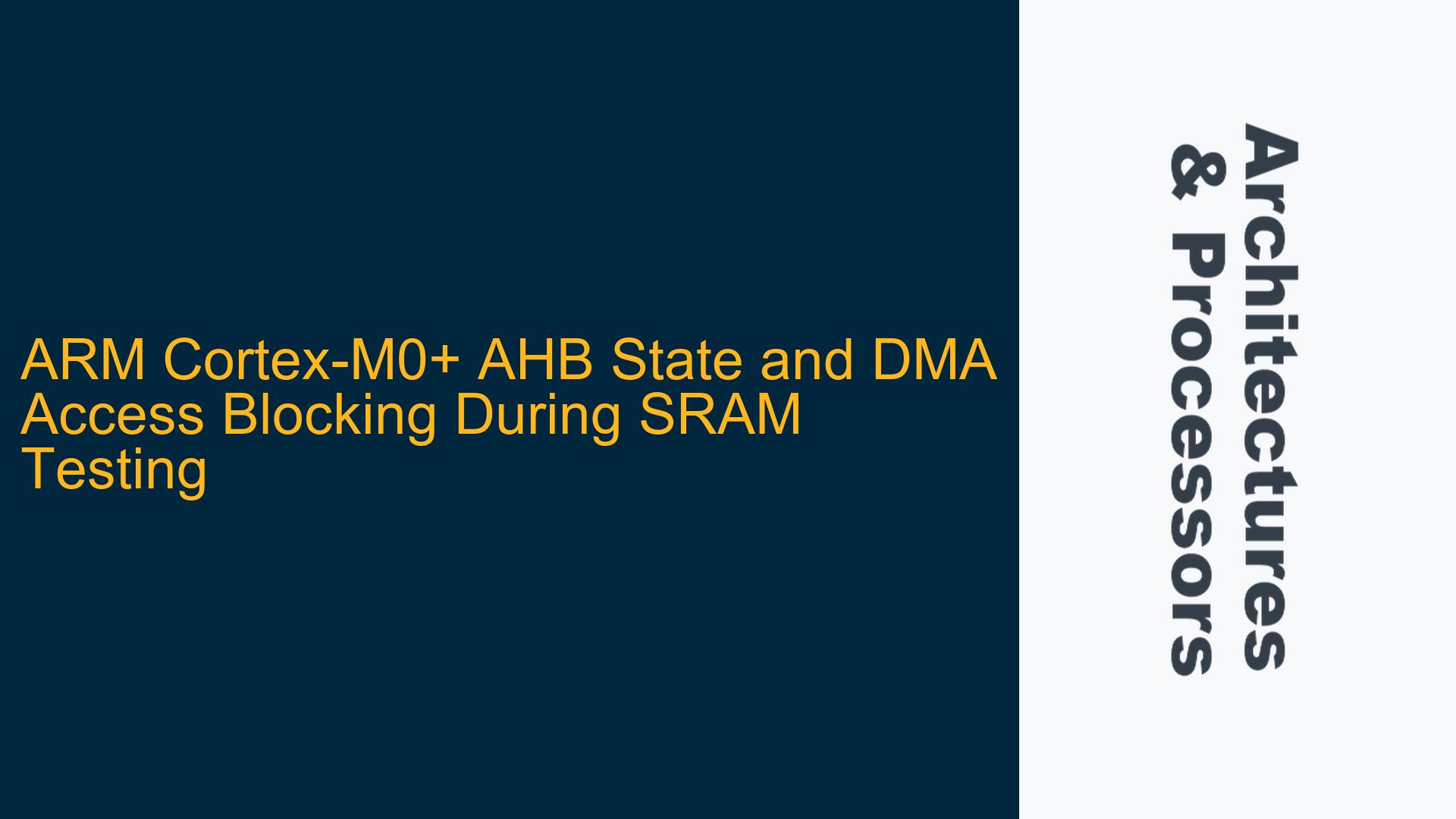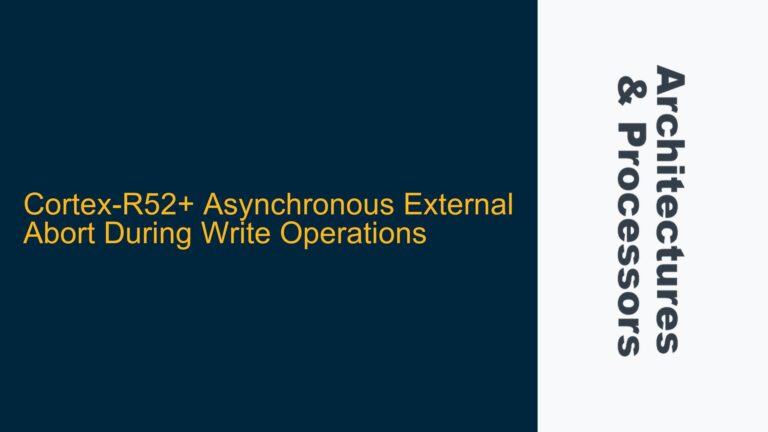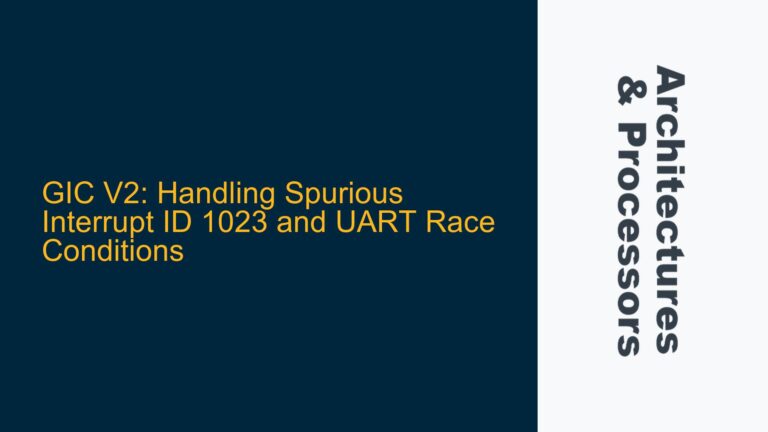Cortex-M0+ AHB Bus Behavior During Exception Handling
The ARM Cortex-M0+ processor, a member of the Cortex-M series, is widely used in embedded systems due to its low power consumption and efficient performance. One of the key components of the Cortex-M0+ architecture is the Advanced High-performance Bus (AHB), which serves as the primary bus for data transfers between the processor core, memory, and peripherals. Understanding the behavior of the AHB during exception handling is crucial for ensuring reliable system operation, particularly when dealing with concurrent access to shared resources such as SRAM.
When an exception occurs on the Cortex-M0+, the processor transitions from thread mode to handler mode. During this transition, the processor saves the current context (including the program counter and status registers) onto the stack and begins executing the exception handler. The AHB bus, which is responsible for transferring data between the processor and memory, continues to operate during this transition. However, the Cortex-M0+ does not provide a mechanism to "lock" the AHB bus or block other bus masters (such as DMA controllers) from accessing the SRAM during exception handling.
This behavior poses a challenge when performing critical operations, such as a cyclic SRAM test, where it is essential to ensure that the SRAM is not modified by external agents (e.g., DMA) during the test. The lack of AHB bus locking mechanisms means that the SRAM could be modified by DMA transfers while the test is in progress, leading to inconsistent or incorrect test results. This issue is particularly relevant in systems where DMA is used extensively for high-speed data transfers, as the DMA controller operates independently of the processor core and can access the SRAM at any time.
DMA Access and SRAM Integrity During Critical Operations
The primary cause of the issue lies in the Cortex-M0+ architecture’s design, which prioritizes simplicity and low power consumption over advanced bus arbitration features. Unlike higher-end Cortex-M processors (such as the Cortex-M4 or Cortex-M7), the Cortex-M0+ does not include hardware support for bus locking or priority-based access control. This means that the AHB bus operates in a shared manner, allowing multiple bus masters (including the processor core and DMA controller) to access the SRAM concurrently.
During a cyclic SRAM test, the processor reads and writes specific memory locations to verify the integrity of the SRAM. If a DMA transfer modifies the same memory locations while the test is in progress, the test results may be compromised. For example, a DMA write operation could overwrite a memory location that the processor has just tested, leading to a false positive or false negative result. This scenario is particularly problematic in real-time systems, where SRAM integrity is critical for ensuring reliable operation.
Another contributing factor is the timing of DMA transfers. DMA controllers typically operate asynchronously with respect to the processor core, meaning that DMA transfers can occur at any time, regardless of the processor’s current state. This asynchronous behavior makes it difficult to predict when DMA transfers will occur and increases the likelihood of conflicts during critical operations such as SRAM testing.
Implementing SRAM Access Control via DMA Disabling and Context Management
To address the issue of SRAM integrity during critical operations, a combination of software and hardware techniques can be employed. The most straightforward approach is to disable the DMA controller temporarily while the SRAM test is in progress. This ensures that the DMA controller cannot access the SRAM during the test, preventing any potential conflicts.
Disabling the DMA controller can be achieved by writing to the appropriate control registers in the DMA peripheral. For example, on the STM32L031 microcontroller, the DMA controller can be disabled by clearing the enable bit in the DMA channel configuration register. This action halts all ongoing DMA transfers and prevents new transfers from starting until the DMA controller is re-enabled. It is important to note that disabling the DMA controller may have implications for other parts of the system that rely on DMA transfers, so this approach should be used judiciously.
In addition to disabling the DMA controller, it is also important to manage the processor’s context carefully during the SRAM test. Since the Cortex-M0+ does not support bus locking, the processor must ensure that the SRAM test is completed as quickly as possible to minimize the window during which DMA transfers are disabled. This can be achieved by optimizing the SRAM test algorithm to reduce the number of memory accesses and by using efficient assembly code to minimize execution time.
Another approach is to use a software-based locking mechanism to coordinate access to the SRAM between the processor and the DMA controller. This can be implemented using a shared flag or semaphore that indicates whether the SRAM is currently being tested. Before starting the SRAM test, the processor sets the flag to indicate that the SRAM is in use. The DMA controller checks the flag before initiating a transfer and waits until the flag is cleared before proceeding. While this approach introduces some overhead, it provides a flexible and scalable solution for managing SRAM access in systems with multiple bus masters.
For systems where disabling the DMA controller is not feasible, an alternative approach is to use a dual-port SRAM or a memory protection unit (MPU) to isolate the SRAM region being tested. Dual-port SRAM allows simultaneous access from two different bus masters, enabling the processor and DMA controller to access different regions of the SRAM concurrently. The MPU, available on some Cortex-M processors, can be configured to restrict access to specific memory regions, preventing the DMA controller from modifying the SRAM during the test.
In conclusion, ensuring SRAM integrity during critical operations on the Cortex-M0+ requires careful consideration of the AHB bus behavior and DMA access patterns. By disabling the DMA controller, optimizing the SRAM test algorithm, and using software-based locking mechanisms or hardware features such as dual-port SRAM or an MPU, it is possible to achieve reliable SRAM testing without compromising system performance. These techniques provide a robust solution for managing concurrent access to shared resources in embedded systems based on the Cortex-M0+ architecture.






